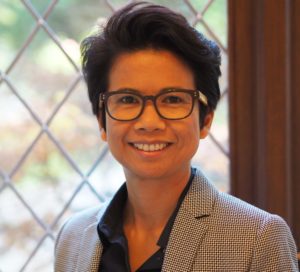When you have a breast abnormality, it is likely that you will need to have a biopsy. This is when a small sample is taken from the breast and sent to the histopathology lab for analysis.
The majority of the time, the result comes back as benign i.e non-cancerous. Of course this is always a relief. But, occasionally, the actual diagnosis and terminology can be a little unclear and confusing. It can sound like a completely different language and quite technical.
In this episode, I have a conversation with Dr Peter Davis, who works as a consultant histopathologist. Together with his team, Peter is responsible for processing and analysing all breast specimens that the clinical team sends him. He is also the person who gives us the diagnosis based on what he sees underneath the microscope.
We talked about various benign breast conditions that are commonly encountered. This included:
1.Cyst
A little pocket of trapped fluid. A duct may get a bit inflammed and blocked and fluid accumulates. A lot of the time, we don’t know where the fluid comes from. Clinically, the fluid can be aspirated from the cyst which then collapses completely. If a cysts is biopsied, the histopathologist can tell it is a cyst by the features of the wall, which is the part of the cyst that is usually biopsied.
2. Fibrocystic change
Areas where cysts can dominate. Very commonly, cysts occurs in clusters, and so when this is the case, an area of fibrocystic change is seen.
3. Fibroadenoma
This is the commonest cause of breast lumps in young women and can present in different sizes. It is due to the proliferation of the epithelium lining of the breast along with the fibrous component of the stroma that then develops into a lump. Fibroadenomas do not turn into a cancer and are fine to be left alone. You can check out a blog I did on fibroadenomas to learn more.
4. Phylloides
These are similar to fibroadenomas but has different features that distinguishes them apart. Phylloides tumours are slightly faster growing and have a characteristic leaf-like pattern with a more infiltrative characteristic. Because it is growing faster, the cell counts within the stroma is higher and so atypical features may be seen. Phylloides can either be benign or malignant.
5. Fat necrosis
The breast consists of glands and ducts as well as fat cells. When for whatever reason, an injury is inflicted to a cell, it can die i.e. undergo necrosis or cell death. The injury to the cell attracts inflammatory cells such as macrophages that engulfs what is left behind. In doing so, together with fat cells, a picture of fat necrosis results. It looks messy underneath a microscope and radiologically it can look worrying. However, it is entirely benign.
Can you help out?
If you are enjoying the My Breast My Health podcast and find it useful, I would be really grateful if you could leave a rating and review. This will help me produce more content and bring value to more people.
You can do this by clicking on Apple Podcast, scroll down to the bottom, rate with the stars and then select ‘Write a Review’. Do let me know which episodes you found useful and what you loved about them.
If you want to make sure you don’t miss out on future episodes, then do subscribe to the podcast. You can do it at Apple Podcast, Stitcher, Spotify, iHeartRadio, Google Podcasts and other podcast apps that take your fancy.
If you want to check out the episode where Peter and I talked about all things related to Breast Cancer Pathology, then click here.
THANK YOU SO MUCH FOR LISTENING


